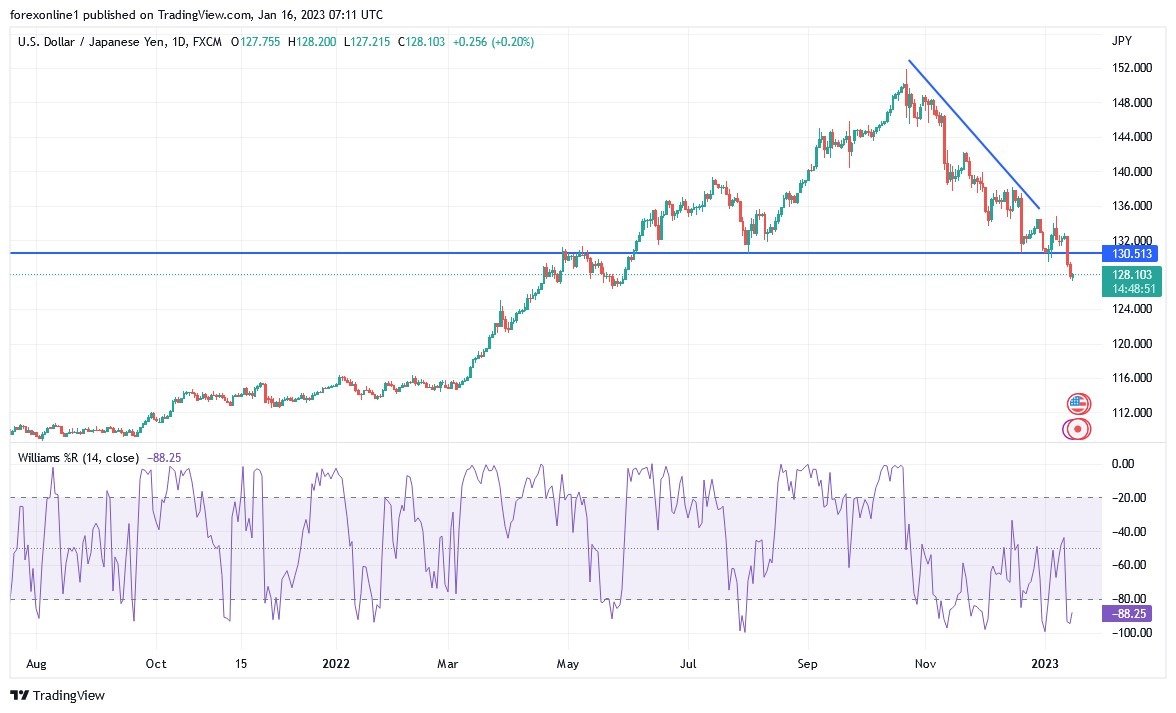- Immediately after the emergence of reports that the Japanese central bank will re-evaluate its monetary policy this week with more stringent steps.
- The price of the Japanese yen jumped strongly against the rest of the other major currencies, without exception.
- In the case of the USD/JPY currency pair, it moved downwards and strongly towards the support level of 127.45, the lowest for the currency pair in eight months.
- The week's trading closed around 127.85, waiting for anything new.
In addition to the shift in the policy of the Japanese central bank, the US dollar was negatively affected by calming expectations about the course of tightening the US Federal Reserve's policy, after the results of the recent important US economic data, led by job numbers and inflation.
According to official figures, US inflation continued to slow in December, adding to evidence that price pressures have peaked and putting the Federal Reserve on track to slow the pace of interest rate hikes again. The overall consumer price index fell -0.1 percent from the previous month, with cheaper energy costs fueling the first drop in two and a half years, according to a Labor Department report on Thursday. The measure increased by 6.5 percent from a year earlier, the lowest level since October 2021.
Excluding food and energy, the core CPI rose 0.3 percent last month and rose 5.7 percent from a year earlier, the slowest pace since December 2021. Economists see the measure — known as core CPI — as a better indicator. of core inflation from the main gauge. The data, when paired with the previous months' lower-than-expected readings, point to steadier signs of easing US inflation and may pave the way for the Fed to ease back to a quarter-point hike at its next meeting ending February 1. However, the central bank's work is far from over.
Where elastic consumer demand, especially for services, coupled with a tight labor market threatens to maintain upward pressure on prices.
The Fed is expected to raise US interest rates further before pausing to assess how the most aggressive tightening cycle in decades will affect the economy. Policy makers stressed the need to keep interest rates high for some time and cautioned against underestimating their willingness to do so. Investors are still betting that the central bank will cut interest rates by the end of the year, despite officials saying otherwise.
Shortly after the report was released, Philadelphia Fed President Patrick Harker said the US central bank should raise interest rates in quarter-point increments "going forward" as it nears the end point of its hiking campaign. Following the data, the S&P 500 index opened higher, treasury yields advanced, while the dollar fell. All numbers matched the average estimate in a Bloomberg survey of economists.
Forecasts of the US dollar against the Japanese yen today:
There is no doubt that the recent move increased the strength of the bearish trend of the USD/JPY currency pair, taking into consideration that this move pushed the technical indicators towards oversold levels according to the performance on the daily time frame chart, and therefore forex traders may monitor the buying levels The most appropriate, which I see, are the levels of 127.10 and 125.90, respectively. On the other hand, and for the same period of time, there will not be a first break of the current trend without the return of the dollar / yen pair towards the resistance level of 131.60 and above it. I still prefer to buy USDJPY from every downside level. Today's session may be quiet in light of the American holiday.
Ready to trade our daily Forex forecast? Here’s a list of some of the best Forex brokers to check out.



